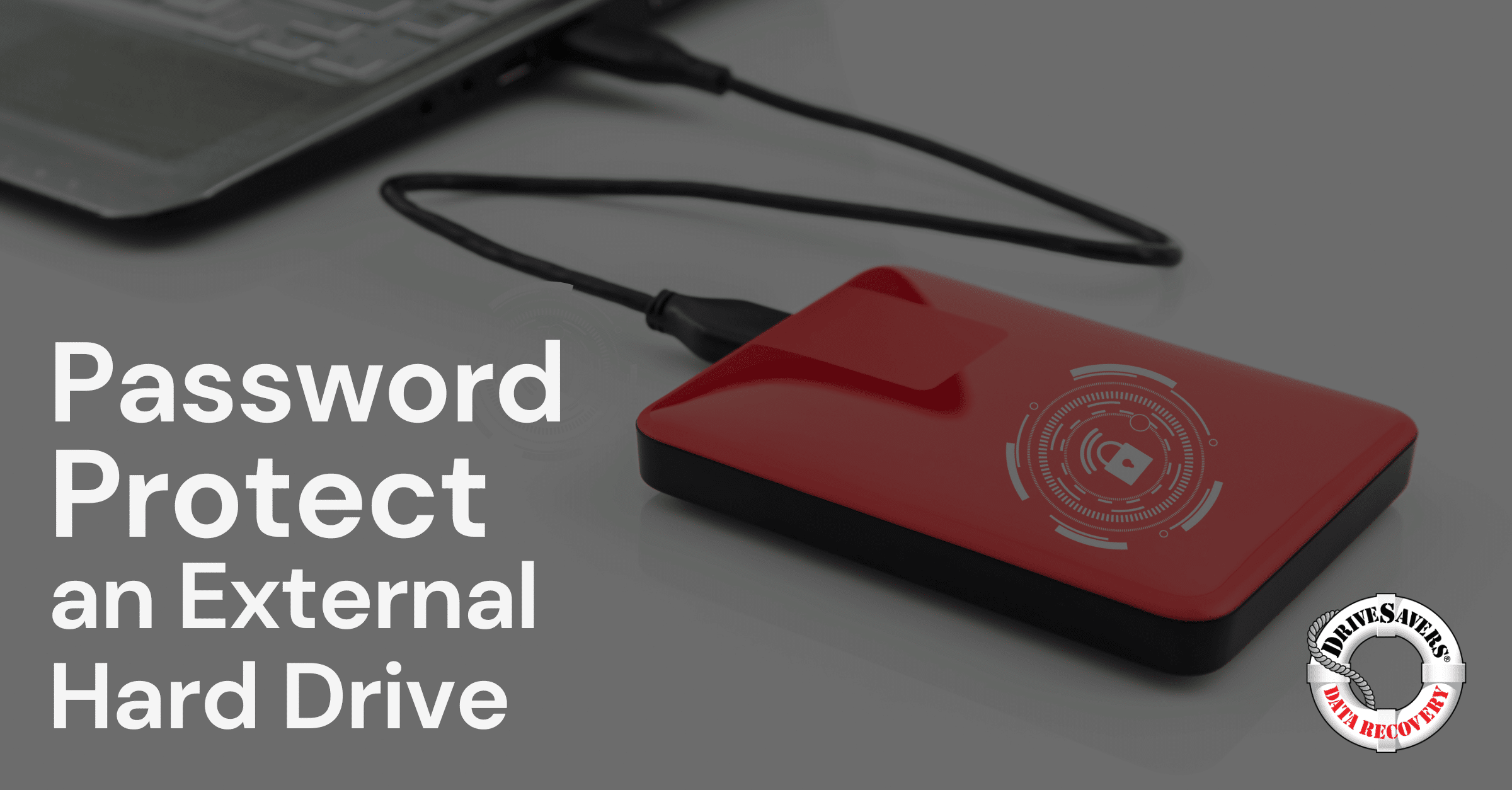How the data recovery experts at DriveSavers plan to retrieve £600 million in Bitcoin from a hard drive buried in landfill since 2013.
Guide to Recovering Data after a Server Malware Attack

In a world heavily reliant on digital data, the menace of malware serves as a harsh reminder of our vulnerabilities. For organisations in the UK, where every bit of data is a cog in the operational wheel, a malware attack on servers is nothing short of a digital catastrophe.
However, amidst the seeming gloom, knowing that the right preparation and response to a server attack is the key to data recovery. Here’s a closer look into the world of malware attacks and how the road to recovering data is paved with expert intervention.
The Digital Landscape
The modern UK business environment is a bustling digital ecosystem where data serves as the lifeblood. From financial records to client information, the spectrum of crucial data is vast and invaluable.
The term “malware” includes various malicious software types, each aimed at disrupting, stealing or destroying data. While server malware poses a formidable threat, expert data recovery services provide a beacon of hope for affected organisations, highlighting the possibility of regaining lost data and normalcy.
Understanding Malware Attacks
Malware attacks are not a matter of if but when. Gaining a fundamental understanding of malware and its various types is the first step towards fortifying your digital estate against malicious onslaughts.
At its core, malware is software designed with malicious intent. It seeks to infiltrate, damage or exfiltrate data from servers, often leaving a trail of destruction in its wake.

Among the malevolent server malware family, ransomware and worms are particularly notorious. Ransomware encrypts data, holding it hostage for a ransom, while worms replicate themselves, spreading corruption across the network.
Being well-versed with the latest malware threats and their modus operandi is crucial. It’s about knowing your enemy; a vital step towards effective defence and recovery.
Related Reading: Do Cloud Backup Services Hold Water?
Immediate Steps Post-Malware Attack
In the event of a server malware attack, a swift response is crucial. The actions executed immediately after discovering the attack significantly impact the extent of data loss and the roadmap to recovering data.
Containment
Isolating the affected servers is the first step to prevent further data corruption. This action helps to stop the malware from spreading across the network, potentially causing more damage to other servers and systems.
Identification and Eradication
Utilising professional anti-malware tools to identify the type of server malware is critical. Once the malware is identified, the eradication process begins to remove the malicious software from the system. Understanding the malware’s behaviour and impact assists in planning the server data recovery process more effectively.
Stakeholder Communication
Clear communication with stakeholders about the incident, its potential impact and the steps for resolution is essential. It helps build trust and ensures a collaborative approach to resolving the issue.
Data Recovery Preparations
Creating a comprehensive data recovery plan is vital for any organisation to ensure the integrity and availability of data in case of any disasters or data loss incidents. Preparing for server data recovery requires several steps that involve analysing risks, identifying critical assets and establishing a recovery team, among other actions. Here’s a detailed breakdown.
1. Conduct a Risk and Resource Assessment:
- Identify Risks: Evaluate the risks that could lead to data loss, such as hardware failure, human error, cyber-attacks or natural disasters.
- Assess Resources: Understand the assets and resources available, such as hardware, software and human resources. This includes identifying critical data and systems that are crucial for business operations.
2. Establish a Cyber Response Team:
- Assemble a Team: Form a dedicated cyber response team with clear roles and responsibilities. This team should include IT personnel, security experts and relevant stakeholders.
- Training: Ensure the team is well-trained and equipped to handle recovering data.
3. Define Recovery Objectives:
- Recovery Point Objective (RPO): Determine the acceptable amount of data loss measured in time.
- Recovery Time Objective (RTO): Establish an acceptable amount of time to restore the system and data to normal.
4. Inventory and Prioritise Data and Systems:
- Catalog Data: Create an inventory of all data and categorise it based on importance to business operations.
- Prioritise Systems: Determine what systems and data are critical and should be recovered first during a disaster.
5. Implement Preventative Measures:
- Data Backups: Establish regular data backup procedures. Ensure backups are stored in a secure, off-site location.
- Maintenance: Regularly maintain and update systems to prevent data loss from avoidable issues such as software bugs or hardware failures.
6. Develop and Document Data Recovery Procedures:
- Draft Procedures: Develop step-by-step recovery procedures tailored to different data loss scenarios.
- Documentation: Document the recovery procedures, contact information and other relevant information in a data recovery plan.
7. Testing and Revision:
- Test the Plan: Conduct regular tests of the server data recovery plan to ensure it works as intended.
- Revise and Update: Based on the testing, revise and update the plan to address any weaknesses or changes in the organisation’s infrastructure.
8. Engage with Experts:
- Consultancy: Engage with data recovery experts for guidance and to ensure the plan is comprehensive and current.
- Expert Liaison: Establish relationships with experts for support during the recovery process.
9. Legal and Compliance Considerations:
- Regulatory Compliance: Ensure the data recovery plan complies with legal and industry-specific regulatory requirements.
- Privacy Considerations: Address privacy concerns and ensure server data recovery operations adhere to protection laws.
10. Communication Plan:
- Internal Communication: Establish communication protocols within the organisation for data recovery scenarios.
- External Communication: Prepare a communication plan for informing stakeholders, customers and regulators if necessary.
Following these steps in a structured and well-documented manner, coupled with expert guidance, will significantly enhance the effectiveness of the data recovery process, ensuring that an organisation is well-prepared to tackle data loss incidents and recover from them in a timely and efficient manner.
Related Reading: 3 Misconceptions About RAID Servers
Data Recovery Process
The data recovery process is a detailed and structured effort. It requires technical expertise, advanced tools and a well-planned approach to ensure the highest data retrieval success rate.
Analysis
Conducting a thorough analysis of the affected servers and the extent of the data loss is crucial. It helps in understanding the impact and formulating an effective recovery strategy.
Recovery Methodologies
Various recovery methodologies can be employed based on the nature and extent of data loss and the type of server malware encountered. Choosing the proper methodology is crucial for maximising data retrieval.
Execution
The execution phase involves implementing the recovery plan. Professional expertise is vital in extracting lost data, restoring it and ensuring data integrity. This phase showcases the importance of expert intervention in navigating the complex recovery process.
Prevention of Future Malware Attacks
Prevention, they say, is better than cure. In the context of malware attacks, preventive measures serve as fortifications against future data adversities.
Cybersecurity Measures
Implementing a robust cybersecurity framework is the cornerstone of preventing future server malware attacks. It’s about creating a digital fortress capable of thwarting malicious intrusions.
Data Backups
Regular data backups are basically like having a safety net. It ensures that a recent copy is readily available to restore operational continuity in the event of data loss.
Awareness and Training
Cultivating a culture of cybersecurity awareness among employees is essential. Empower your workforce to recognise and respond to potential threats proactively.
Legal and Compliance Considerations
Navigating the legal and compliance landscape after a malware attack is a nuanced affair. Understanding the legal obligations and ensuring compliance can help to mitigate potential legal repercussions.
GDPR and Data Breaches
In the UK, GDPR mandates the protection of personal data and outlines the obligations of organisations in the event of a data breach. GDPR covers the EU, so the Data Protection Act 2018 acts similarly in the UK.
Reporting Obligations
Reporting the incident to the Information Commissioner’s Office (ICO) and other relevant bodies is a legal obligation, emphasising the importance of adherence to regulatory frameworks.
Legal Expert Engagement
Engaging legal experts can provide invaluable guidance, ensuring the organisation complies with legal obligations post-incident.
Related Reading: Cybersecurity Report: The Overlooked Risk in Third-party Data Recovery
Stepping into Server Data Recovery
The journey from a malware attack’s chaos to the calm of data recovery is a testament to the resilience of modern organisations. Expert intervention is the linchpin of successful data recovery, turning potential despair into a narrative of hope and recovery.
DriveSavers, with its seasoned expertise, emerges as a trusted companion in this journey, offering professional data recovery services that prioritise data integrity and client satisfaction. Having a reliable partner like DriveSavers on speed dial is a prudent strategy for any organisation keen on safeguarding its digital assets against the unforeseen wrath of malware.





